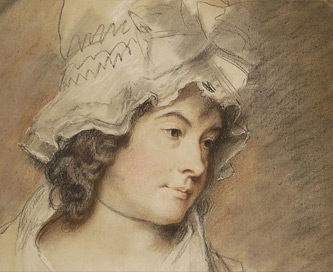English: Beachy Head

The chalk-white cliffs of Beachy Head in southeast England inspired the poet Charlotte Smith and, two centuries later, Lehigh English professor Beth Dolan and musician Amanda Jacobs. (Photo by 2/Images Etc Ltd, courtesy of Corbis Images)
Beachy Head, the chalk headland on England’s southeastern coast, has for centuries been the subject of stories and songs. In 1807, Charlotte Smith's complex poem about the cliffs appeared, and an interpretation of her work is the focus of a new project by Beth Dolan.
Dolan, associate professor of English, spent the summer of 2014 in England on a monthlong fellowship at the renowned Chawton House Library, where Jane Austen lived for part of her life. There she met musician Amanda Jacobs, who was setting Austen’s prayers to music. The pair was intrigued by Smith’s most complex poem, Beachy Head, which depicts the landmass of the same name. Scholars credit Smith with major contributions to Romantic-era poetry, including starting the sonnet revival, celebrating subjective experience as a legitimate poetic topic and boldly experimenting with poetic form. Writing the poem during England’s long war with France, Smith invokes themes of separation and continuity. The poem also explores the geographical, paleontological and botanical histories of this landform. Several lonely figures populate the landscape, including a hermit who recovers bodies from shipwrecks and suicides and buries them in the cliff. Although some of Smith’s sonnets have been set to music, Dolan says no one has attempted Beachy Head.
“The 731-line poem is known not only for its formal variety, but also for its thematic complexity and range of voices. These qualities make Beachy Head an excellent source text for a song cycle.”
Discussing the poem over several months, Dolan and Jacobs identified and named 26 songs, organized into five song cycles. The pair then went back through the poem and extracted lyrics for the individual songs—only omitting some of Smith’s language, never adding words. The “Beachy Head Cycle” contains a prologue and four songs, followed a long, single song interlude, “Historical Contemplation.” Next Dolan and Jacobs take up “Happiness” in a five-song cycle and then begin the seven-song “Nature Cycle,” which includes lines that speak back to “Historical Contemplation.” Five songs make up “The Stranger’s Cycle,” one of which harkens back to the “Happiness Cycle.” Finally, Beachy Head ends with three moving songs that comprise the “Hermit’s Cycle.”
“Smith did not explicitly identify these sections, but you can see these songs in there,” says Dolan. “Although some scholars argue that the posthumously published poem was unfinished when Smith died, the deep structure scholars discovered suggests that Beachy Head is a complete, refined and complex work.”
The pair performed excerpts from the song cycle as a lecture recital—the culminating event of the Romantic Studies Association of Australasia meeting in July—the theme of which was “Re-reading Romanticism.” Dolan introduced the song cycles with short lectures. Jeannie Marsh, an accomplished mezzo soprano based in Melbourne, sang Smith’s words while Jacobs accompanied on piano. Beachy Head was also performed at Lehigh’s Zoellner Arts Center in September with mezzo soprano Kathryn Cowdrick of the Eastman School of Music performing with Jacobs and Dolan.
Story by Robert Nichols
Posted on:


